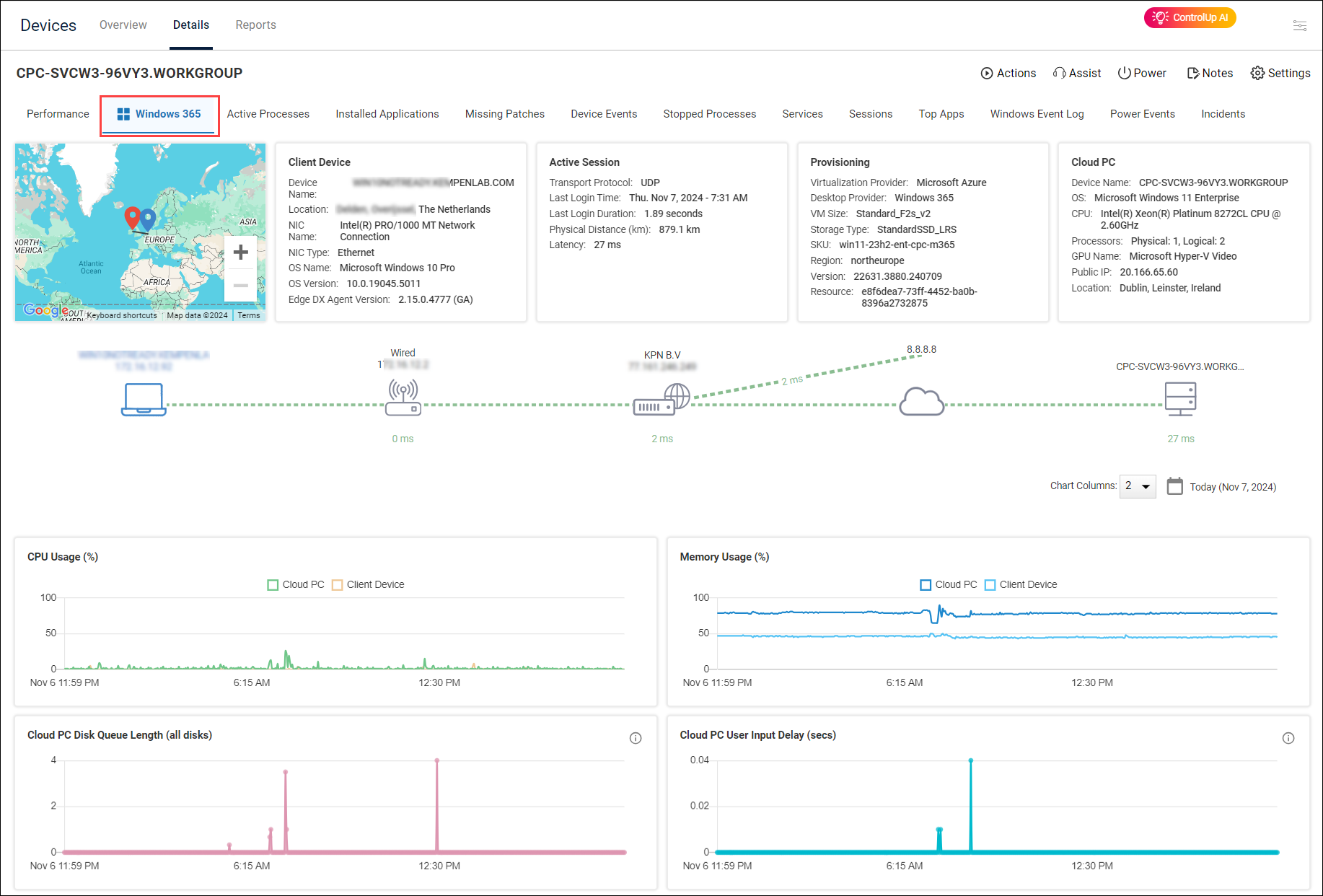ControlUp for Desktops helps you find the root cause of Windows 365 performance issues by showing you metrics from the cloud PC, client device, and the connection between them.
Note that metrics from the connected client device are available only if the client uses the Windows 365 desktop application.
Continue reading below to learn how to set up and use this feature.
(Required) Install the Agent on the cloud PC
Follow the instructions in Windows Agent Installation to install the ControlUp for Desktops Agent on the Windows 365 cloud PC. You must install Agent version 2.15 or higher.
Learn how deploy the Agent with Intune.
(Recommended) Install the Agent or Remote Clients plugin on the client device
If you don't install any ControlUp component on the client device, you can see only basic information about the client (the device name and the session latency/frame loss).
To get detailed metrics from the client, you must install either the ControlUp for Desktops Agent or the Windows 365 Remote Clients plugin on the client.
Which one should I install?
The ControlUp component you should install on the client depends on your deployment scenario and ControlUp license.
If you want to fully manage the client (for example, if the client is a company-issued laptop), you should install the ControlUp for Desktops Agent and get the full suite of ControlUp for Desktops features. This uses another seat in your ControlUp license (one for the cloud PC and one for the client). This method supports all client operating systems that support the Agent.
If you don't want to fully manage the client (for example, if your employees use their personal devices to connect to their cloud PC), you should install the Windows 365 Remote Clients plugin on the client. Currently, the plugin is supported only on Windows clients. The plugin sends client data to the Agent on the cloud PC only while the client is actively connected to the cloud PC. The plugin doesn't use any seats in your ControlUp license, but requires the Advanced license tier. You can download the plugin from our Download Center. Learn how to install the plugin.
See cloud PC and client data in ControlUp
After you install the Agent onto the cloud PC, the cloud PC appears in your list of devices, and you can view device metrics just like any physical Windows device. To quickly see all cloud PCs and all relevant columns, select the Windows 365 column preset.

All cloud PCs with an active session show the name of the connected client in the Client Device Name column with a house icon next to its name.
![]()
Click on the house icon to open an overlay with connection details and important information about the client and cloud PC.

If the Agent is installed on the client, you can click on the client in the connection graphic to drill down.
For more information about Windows 365 sessions, click on the name of a cloud PCs in the table, and select the Windows 365 tab. This tab shows detailed historical metrics for the cloud PC, connected client, and session connectivity.

Connections from multiple clients
The Windows 365 tab shows data from the currently connected client at any given time, but does not save the client name for historical data.
For example, if you are looking at the historical graph of available client memory, there is no client name attached to each data point. There is no way to determine which client was used for historical sessions.